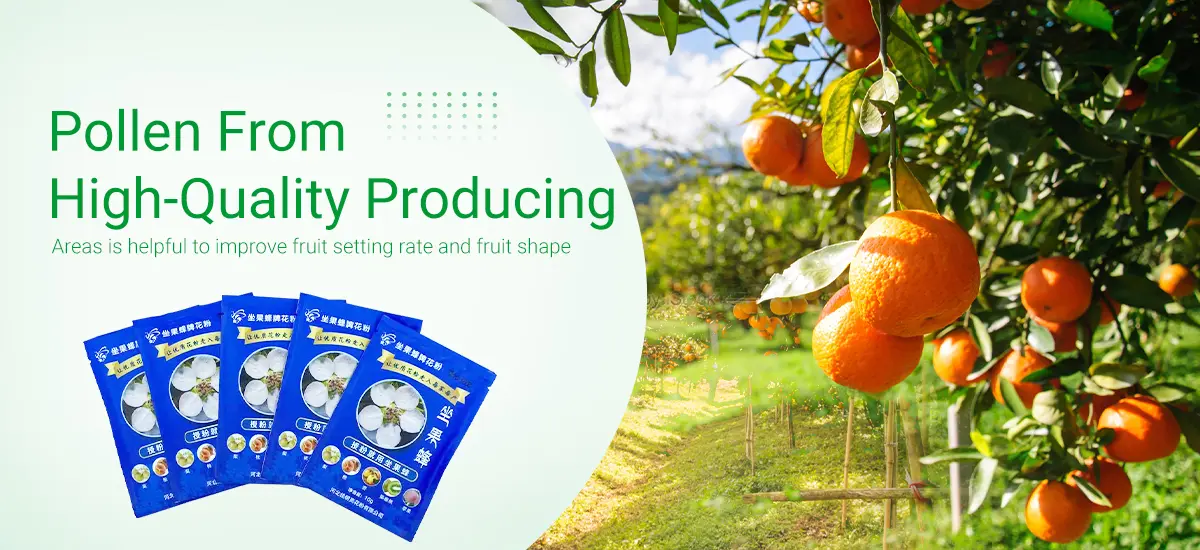Dec . 03, 2024 15:57 Back to list
Effective Methods for Apple Pollination and Export Strategies for Growers
The Apple Pollination Method and Its Impact on Exporters
Apple trees (Malus domestica) are one of the most widely cultivated fruit trees globally, and their successful fruit production hinges on effective pollination. Pollination is the transfer of pollen from the male anthers of a flower to the female stigma, leading to fertilization and the formation of fruit. For apple trees, the pollination process is particularly intricate due to their deciduous nature and the distinct genetic requirements for successful fertilization. This article explores the methods of apple pollination and their implications for exporters in the global fruit market.
Understanding Apple Pollination
Unlike some fruit trees that are self-fertile, most apple varieties are diploid and require cross-pollination to set fruit. This means that apples need pollen from a different cultivar to produce apples, making the choice of pollinator trees crucial for successful yields. The primary pollination methods for apples can be classified into two categories natural pollination by insects, particularly bees, and artificial pollination techniques.
Natural Pollination
Bees, especially honeybees, play a vital role in the natural pollination of apple trees. The timing of flowering is critical; apple blossoms typically open in the spring. During this time, bees are attracted to the flowers for their nectar and pollen. Cross-pollination occurs when bees transfer pollen between different apple cultivars, enhancing the genetic diversity of the fruit and improving the overall yield and quality. For apple growers, creating an environment that encourages bee populations is essential; this includes planting pollinator-friendly flora and reducing pesticide usage during flowering periods.
Artificial Pollination
In areas where natural pollinators are scarce or where specific apple varieties require controlled pollination, artificial methods can be employed. This includes hand-pollination, whereby workers manually transfer pollen using tools such as small brushes or cotton swabs. While labor-intensive, hand-pollination can ensure that the desired cross-pollination occurs, particularly in commercial orchards that focus on high-value varieties.
The introduction of new technologies, such as drone pollination, is also being explored
. Drones equipped with pollen delivery systems can mimic bee pollination, offering a potential solution to the decline in bee populations observed in many regions.apple pollination method exporter

Impact on Exporters
The pollination methods employed by apple growers directly influence the quality and quantity of the fruit produced, which in turn affects their position in the global market. Exporters must ensure that they have high-quality apples, as grading standards in international markets are stringent.
1. Quality Assurance Successful cross-pollination typically results in apples that are more uniform in size and shape, possess better color, and have improved taste. Higher quality leads to better prices in the export markets. Growers who implement effective pollination strategies are likely to see a significant return on investment.
2. Varietal Selection and Diversity Since certain apple varieties are more desirable in global markets—such as Honeycrisp, Fuji, and Gala—exporters must carefully consider the diversity of trees in their orchards. Choosing the right pollinators is crucial not only for production but also for meeting market demands for specific apple varieties.
3. Sustainability Practices As concerns about environmental impact grow, sustainable practices in orcharding become increasingly important. Better pollination practices can reduce the need for chemical interventions, appealing to eco-conscious consumers and enabling exporters to market their products as sustainably sourced.
4. Market Trends Understanding the apple pollination cycle can also aid exporters in aligning with market trends. For instance, knowing the optimal pollination periods can help plan harvest times, ensuring that fresh apples are available for export when demand peaks.
Conclusion
The method of pollination used in apple cultivation significantly impacts the overall quality and yield of the apples produced, which in turn affects exporters in a competitive global market. Understanding and implementing effective pollination techniques—whether through natural methods or technological innovations—can enhance fruit quality, sustain biodiversity, and ultimately drive profitability in the apple exporting industry. As the global demand for high-quality apples continues to grow, the emphasis on effective pollination strategies will become increasingly critical for success in the apple export business.
-
Premium Cherry Pollen for Pure Pollination & Different Types
NewsJul.30,2025
-
Artificial Pollination Solutions for Various Plant Pollen Types
NewsJul.29,2025
-
Artificial Pollination Solutions for All Plant Pollen Types
NewsJul.29,2025
-
Premium Plant Pollen for Pure Pollination & Pollen Block Solutions
NewsJul.29,2025
-
Artificial Pollination Solutions for Efficient Crop Yields
NewsJul.28,2025
-
Premium Cherry Pollen for Pure Pollination & Different Types of Pollen
NewsJul.28,2025